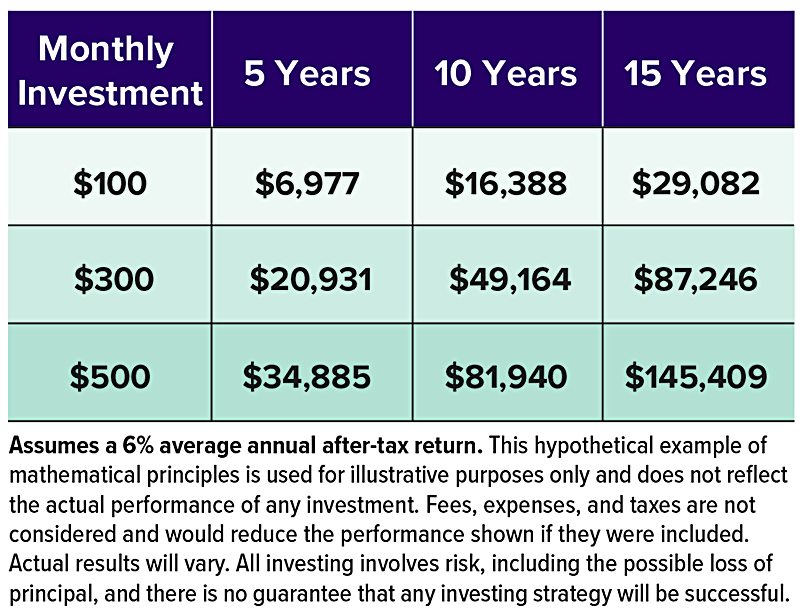Financing a college education with the least amount of debt involves putting together a variety of resources in the most favorable way for your family. It requires planning, savings discipline, an understanding of financial aid, smart college research, and good decision-making at college time.
Your College Fund
Your savings are the cornerstone of any successful college financing plan. It’s helpful to think of your college savings as a down payment on the full cost, similar to a down payment on a home. Then at college time you can supplement your savings with other available resources.
Setting aside money for college over many years takes discipline, and in many cases sacrifice, including lifestyle changes. Every family’s situation is different. But if you save regularly over time, you might be surprised at how much you could accumulate in your college fund.
A College Fund Takes Shape

Financial Aid
Financial aid is the next piece of the puzzle. It’s a broad term that can mean a lot of things, with concepts that are often used interchangeably. At its core, financial aid is money to help pay for college: loans, grants, scholarships, and work study. Your overall goal is to get the most amount of grants and scholarships (grant aid) and the least amount of loans.
Colleges are the largest source of grant aid, with annual need-based and/or merit-based grant awards that can be in the tens of thousands of dollars. By contrast, the federal government’s two main grants, the Pell Grant and the Supplemental Educational Opportunity Grant, are generally smaller amounts and reserved for students with the greatest financial need.
To help find colleges with the most generous grant aid, use a net price calculator, which is available on every college website. A net price calculator provides an estimate of how much grant aid a student might expect based on his or her financial information and academic profile. By completing a net price calculator for several colleges, you can compare what your out-of-pocket cost (net price) might be at different schools and rank colleges based on affordability.
The federal government’s main contribution to the world of financial aid is in the form of student loans. All students, regardless of financial need, are eligible for federal student loans.
Additional Funding Sources
Other potential resources at college time might help reduce the overall amount you’ll need to borrow: what you can contribute from current income during the college years; your child’s earnings from a school or summer job; education tax credits, which could be worth up to $2,500 per year; financial help from grandparents or other relatives; and scholarships from civic, private, or nonprofit groups.
On the cost-cutting side, your child might consider graduating in less than four years; attending community college for two years and then transferring to a four-year college; becoming a resident assistant to get free or discounted room and board; living at home for a semester or two; exploring all in-state public college options; and deferring enrollment for a year to earn money and take advantage of any employer educational assistance.
After taking everything into account — the amount of your college fund, the grant aid your child might receive at specific colleges, the amount of money you and your child can contribute from current income during the college years, and the availability of other resources and cost-cutting measures — you can determine how much borrowing would be required for specific colleges and make an informed choice.
Borrowing money to pay for college can easily spiral out of control. Make sure your child understands what the monthly payment will be for different loan amounts over a 10-year repayment term. If the numbers look daunting, don’t be afraid to say “no” to certain colleges. Most teenagers are not financially experienced enough to fully understand the negative consequences of extreme borrowing, so it’s up to parents to help eliminate options that aren’t financially viable.
Prepared by Broadridge Investor Communication Solutions, Inc. Copyright 2022.
Financial assistance is available! Get matched with a Financial Advisor:


